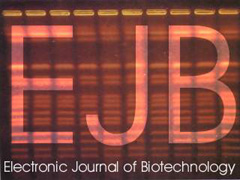Abstract
Citrus tristeza closterovirus (CTV), is a phloem-limited virus transmitted by aphids in a semipersistent manner. The genome of CTV is composed of a ssRNA with two capsid proteins: CP, covering about 95% of the particle length, and a diverged coat protein (dCP), present only in one end of the particle, forming a rattlesnake structure. dCP is the product of p27 gene for which it is also postulated a function in the transmissibility by aphid vectors. Hybridization analysis showed a p27 gene region, which exhibits different patterns with two probes derived from two biological distinct CTV isolates. In an attempt to screen whether that gene region differs in mild and severe strains, six CTV isolates belonging to different biogroups were compared for variations in their p27 gene by analysis of single-strand conformation polymorphism (SSCP). The p27 gene was reverse transcribed and amplified by PCR and thirty clones of each isolate were obtained. From each clone, two fragments of the gene were amplified by PCR: fragment (a), 459 bp long, and fragment (b), 281 bp long. Sequence variations in both gene fragments were studied by SSCP analysis. A variety of SSCP patterns was obtained from each isolate, being isolates belonging to the groups II-IV and III those with the higher and lower number of them. Moreover, SSCP analysis provided a rapid procedure to screen the genetic heterogeneity of the viral isolates reducing considerably the amount of nucleic acid sequenciation necessary to gain that knowledge.
Upon acceptance of an article by the journal, authors will be asked to transfer the copyright to Electronic Journal of Biotechnology, which is committed to maintain the electronic access to the journal and to administer a policy of fair control and ensure the widest possible dissemination of the information. The author can use the article for academic purposes, stating clearly the following: "Published in Electronic Journal of Biotechnology at DOI:10.2225/volXX-issueX-fulltext-XX".
The Copyright Transfer Agreement must be submitted as a signed scanned copy to biotec@ucv.cl. All authors must send a copy of this document.
